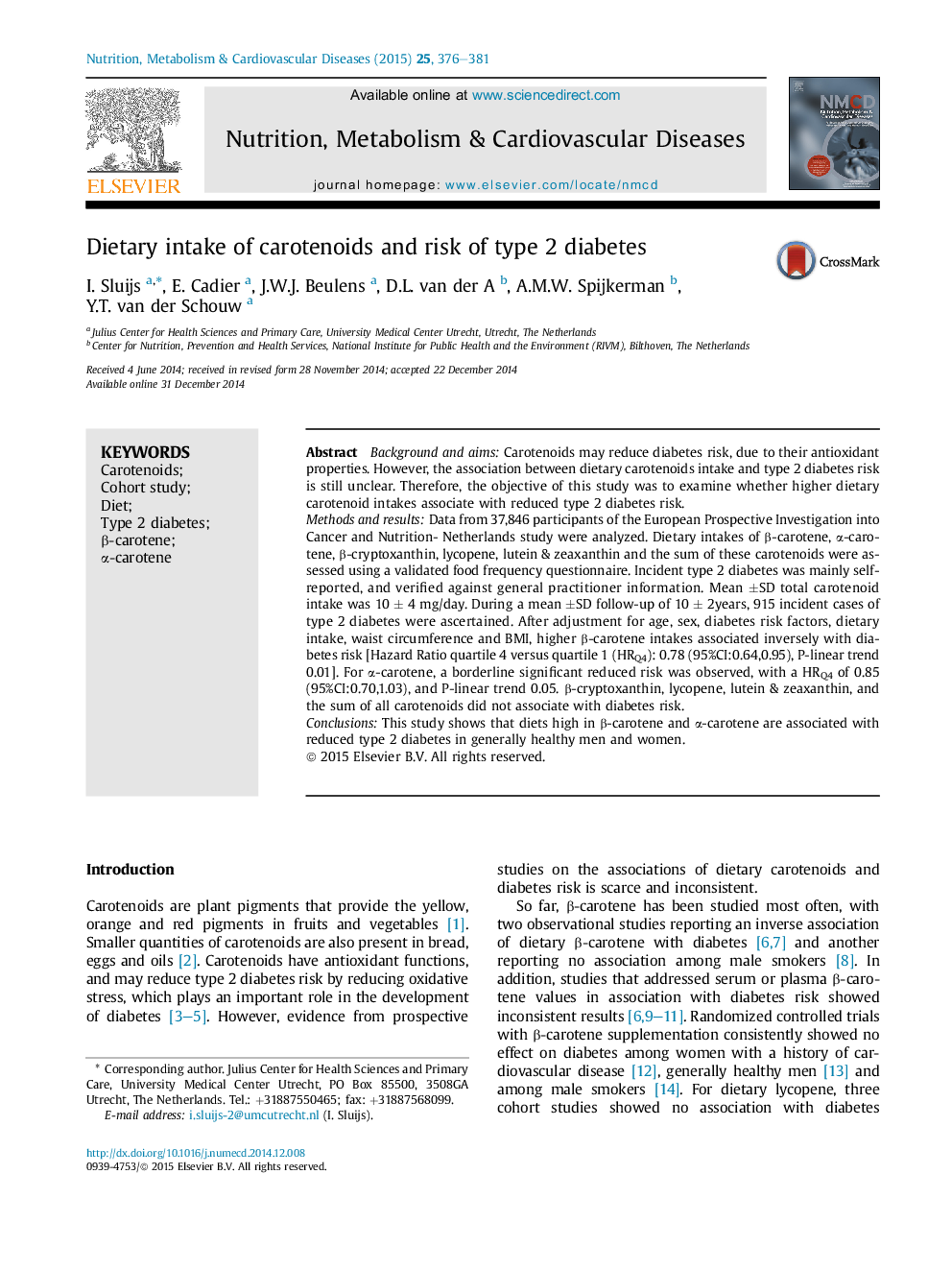| کد مقاله | کد نشریه | سال انتشار | مقاله انگلیسی | نسخه تمام متن |
|---|---|---|---|---|
| 3001905 | 1180685 | 2015 | 6 صفحه PDF | دانلود رایگان |
• Diets high in β-carotene and α-carotene associate with reduced type 2 diabetes risk.
• Diets high in β-cryptoxanthin, lycopene, lutein and zeaxanthin do not associate with type 2 diabetes risk.
• The associations of dietary carotenoids and type 2 diabetes risk are not modified by smoking status.
Background and aimsCarotenoids may reduce diabetes risk, due to their antioxidant properties. However, the association between dietary carotenoids intake and type 2 diabetes risk is still unclear. Therefore, the objective of this study was to examine whether higher dietary carotenoid intakes associate with reduced type 2 diabetes risk.Methods and resultsData from 37,846 participants of the European Prospective Investigation into Cancer and Nutrition- Netherlands study were analyzed. Dietary intakes of β-carotene, α-carotene, β-cryptoxanthin, lycopene, lutein & zeaxanthin and the sum of these carotenoids were assessed using a validated food frequency questionnaire. Incident type 2 diabetes was mainly self-reported, and verified against general practitioner information. Mean ±SD total carotenoid intake was 10 ± 4 mg/day. During a mean ±SD follow-up of 10 ± 2years, 915 incident cases of type 2 diabetes were ascertained. After adjustment for age, sex, diabetes risk factors, dietary intake, waist circumference and BMI, higher β-carotene intakes associated inversely with diabetes risk [Hazard Ratio quartile 4 versus quartile 1 (HRQ4): 0.78 (95%CI:0.64,0.95), P-linear trend 0.01]. For α-carotene, a borderline significant reduced risk was observed, with a HRQ4 of 0.85 (95%CI:0.70,1.03), and P-linear trend 0.05. β-cryptoxanthin, lycopene, lutein & zeaxanthin, and the sum of all carotenoids did not associate with diabetes risk.ConclusionsThis study shows that diets high in β-carotene and α-carotene are associated with reduced type 2 diabetes in generally healthy men and women.
Journal: Nutrition, Metabolism and Cardiovascular Diseases - Volume 25, Issue 4, April 2015, Pages 376–381
